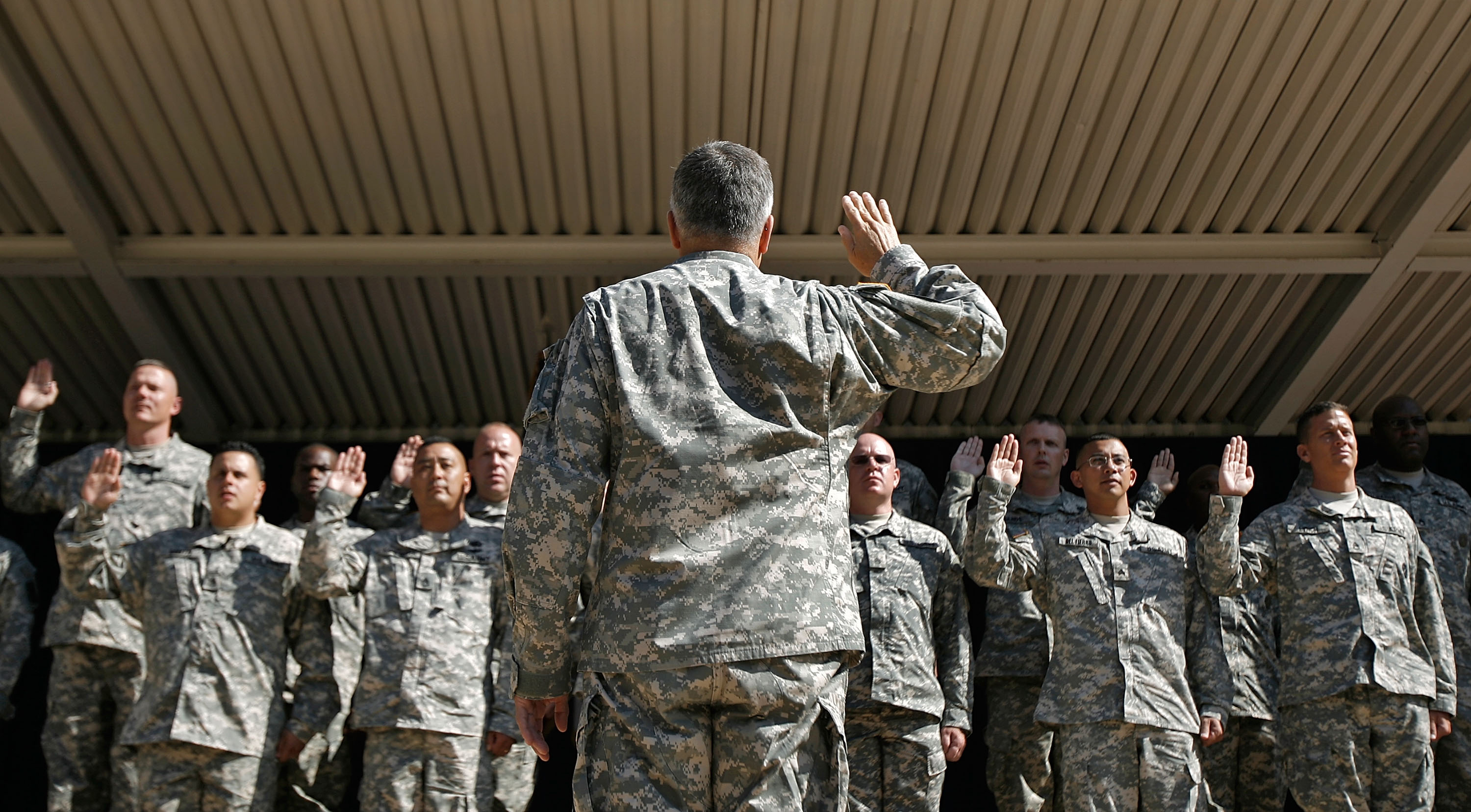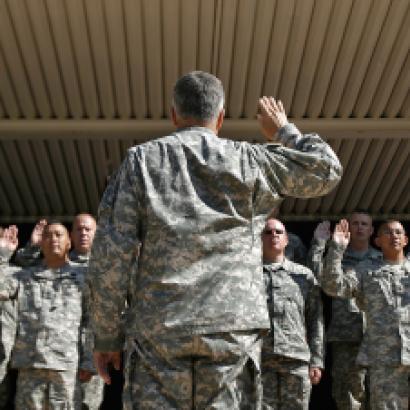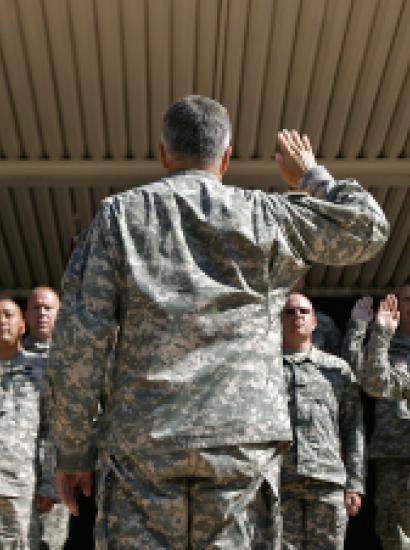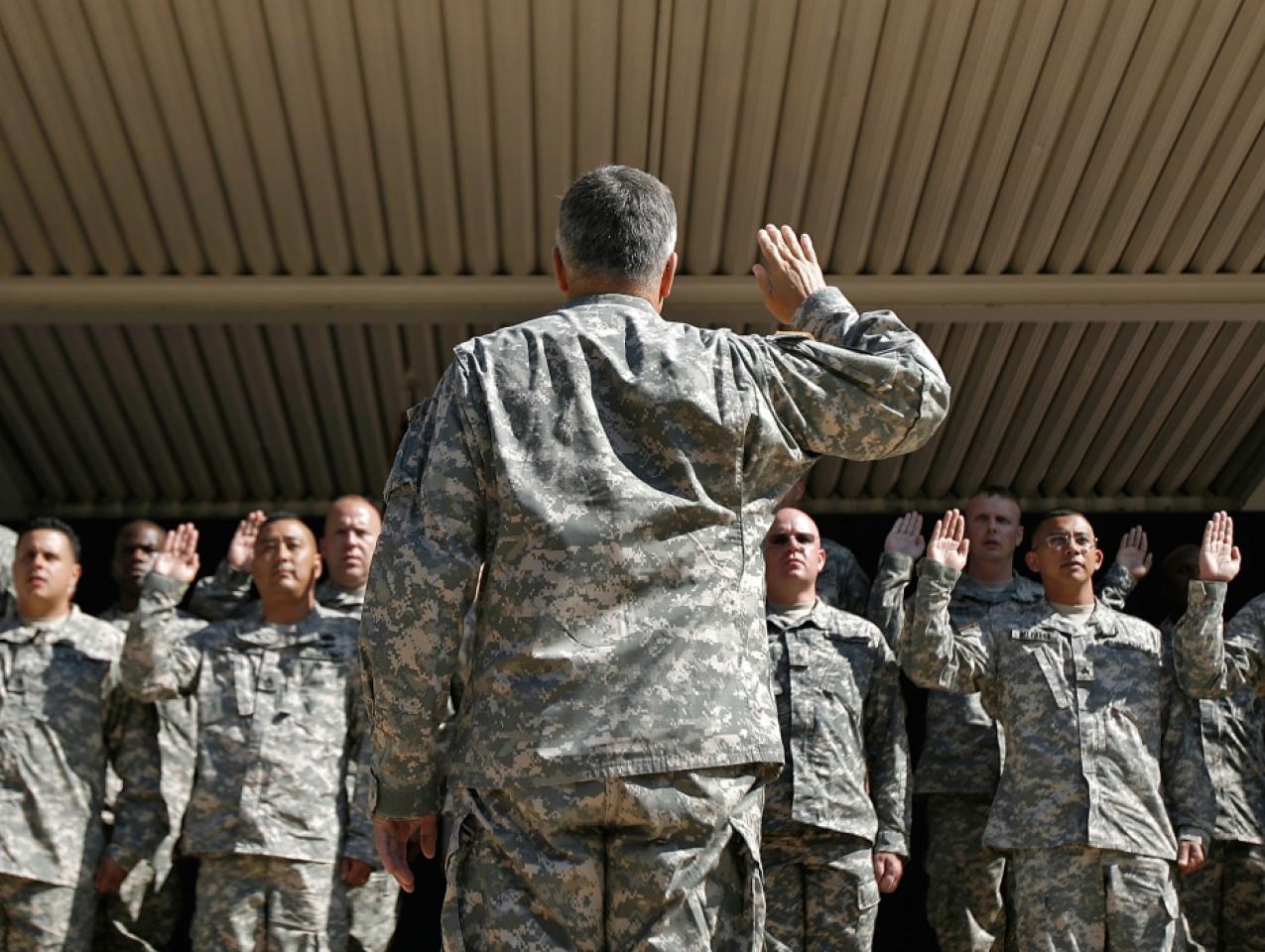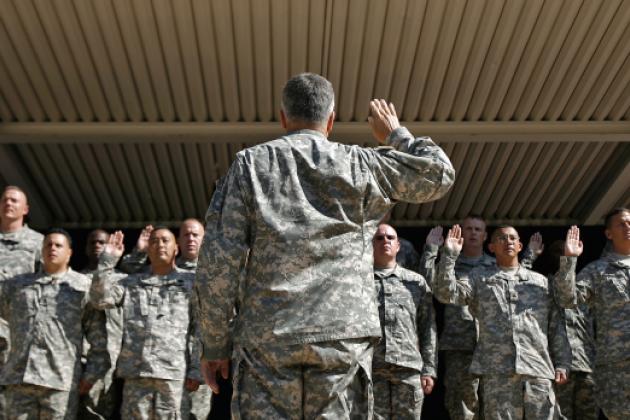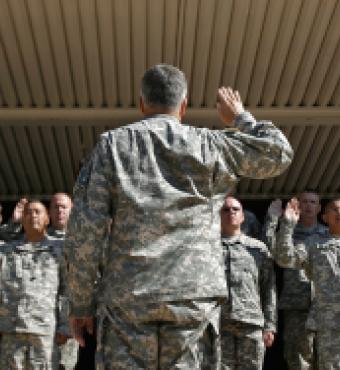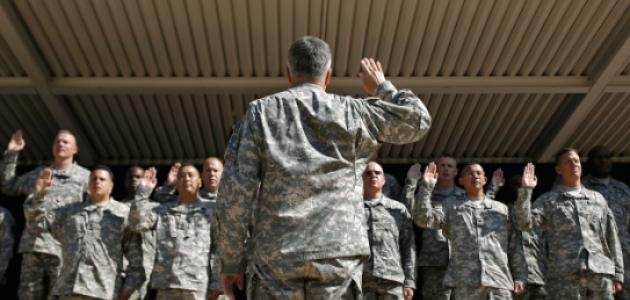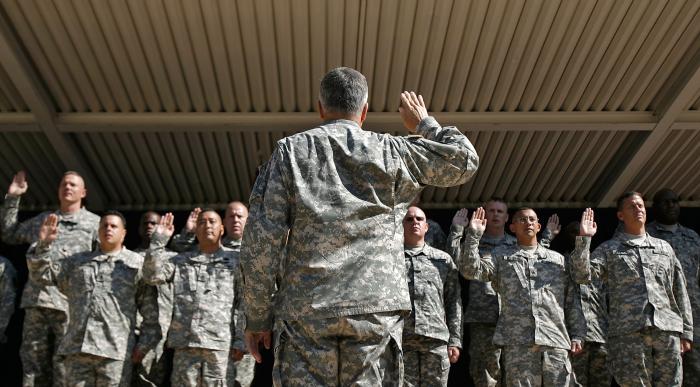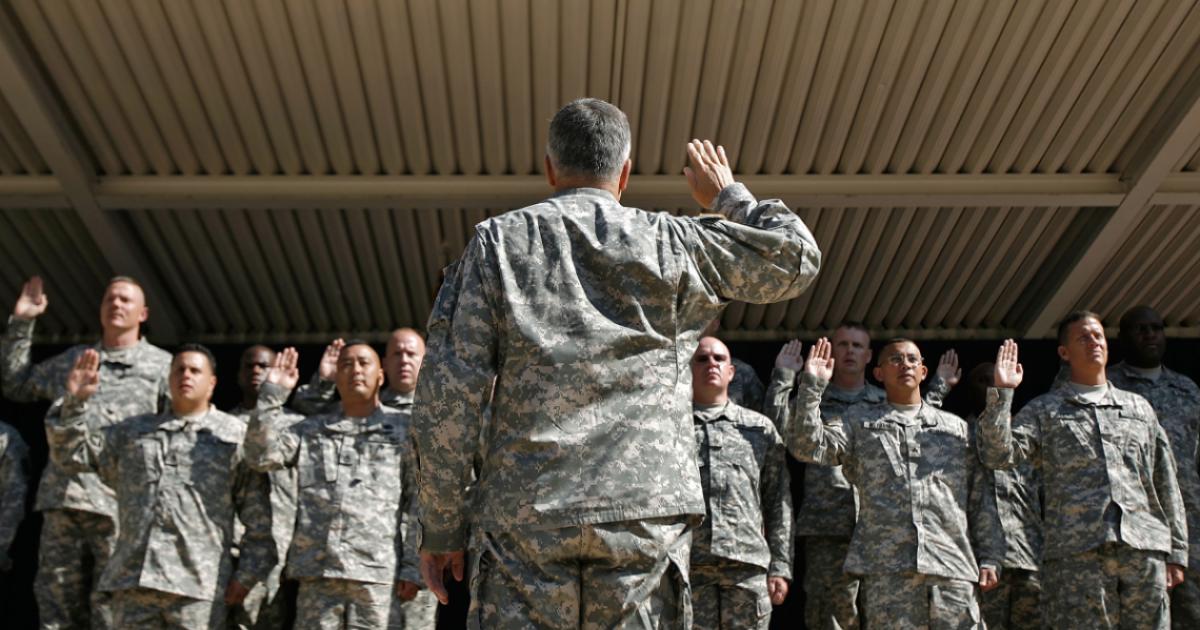This essay is adapted from a fuller treatment of the topic to be published in the spring 2024 issue of the Hoover Digest. Subscribe at www.hooverdigest.org.
Over the years, the United States failed to achieve its desired objectives in Vietnam, Iraq, and Afghanistan because it followed an inadequate counterinsurgency doctrine. This inadequacy has still not been addressed. Failure to do so poses a national security vulnerability that can be exploited in the coming years by both nation-states and nonstate actors.
But developing and refining such a doctrine is never easy, and the difficulty begins with the words themselves: US military counterinsurgency doctrine focuses on achieving the support and consent of the population, while “successful” counterinsurgencies in the twentieth century—military campaigns that managed to pacify populations, defeat guerrillas, and impose order—focused on the acquiescence of the population, a distinct and crucial difference. Of great importance, legal and moral reasons prevent the United States from repeating the harsh tactics that were used to win that acquiescence in counterinsurgencies of the twentieth century. These have included deliberately targeting civilians and their property, forced population moves, concentration camps, starvation, summary executions, and physical separation of the population from insurgents. Yet it cannot be ignored that attempts in the modern mold to build local capacity and win the support and consent of populations have repeatedly failed.
We propose two solutions to help the United States fill its counterinsurgency capability gap. One is to carry out limited duration, high intensity, punitive expeditions where retribution without rebuilding is used to degrade an adversary’s ability to attack the United States while simultaneously sending a strategic message that US interests will be protected. Alternatively, and similar to civilian policing, we suggest establishing a continuous, well-guided, well-supported presence of forces in areas being secured when counterinsurgency operations are desired or unavoidable.
What is the goal?
After August 31, 2021, when the United States left Afghanistan after twenty years of conflict, the Taliban immediately regained control. The world has also seen the government of Iraq lose vast territories to ISIS and other Islamist groups, requiring the United States to assist even after sixteen years of combined operations and nation building. In both cases, the United States failed, despite long and costly attempts, to achieve its objective of creating self-governing nations capable of securing themselves against Islamist movements and protecting US interests from attack.
Counterinsurgency will continue to matter in the future. Success in conventional battles can shift into ongoing irregular warfare, as the United States learned in the Philippines in the early twentieth century, and more recently in Iraq. Future conflict may further blur the lines between irregular and conventional warfare through techniques that tightly integrate irregular and conventional capabilities. Considering China, for instance, “irregular warfare activities are so fully integrated with conventional tactics and operations that they are not identified as ‘irregular,’ ” according to an article by David Knoll, Kevin Pollpeter, and Sam Plapinger. The United States’ pivot toward anticipating near-peer, large-scale combat operations leaves a strategic gap that must be filled. How can the United States modify its doctrine and strategy for irregular warfare without violating its values?
Values loom large in the modern US approach to counterinsurgency. The United States developed and followed its counterinsurgency doctrine by focusing on the ideological separation of the population from insurgents—providing security, food, education, democracy, medicine, religious freedom, and women’s rights to gain consent and support. This approach assumes the foreign population also values and supports those efforts in the face of violence and intimidation from insurgent groups.
Counterinsurgencies are about people, so gaining and keeping their support is critical to success. Therefore, accurately assessing which tactics and strategies are most likely to attain the desired result—based on what those people value and how they respond to different tactics—is an important part of planning for counterinsurgency warfare. Whereas some populations may cower to the group wielding the greatest power, others may be driven to fight even more aggressively. The selection of tactics should take into account historical analysis of how different cultures react to different strategies.
The phrase “hearts and minds” is commonly used to describe efforts to gain popular support. The term, originally credited to Field Marshal Gerald Templer in 1968 during the Malayan Emergency, is actually ambiguous in its meaning for counterinsurgency efforts. US interpretations refer to the consent and support of the population, while historical British understandings of the term focus on its acquiescence. British Colonel I. A. Rigden, quoted in a Ministry of Defense report, argued for a coercive interpretation of the term:
“Hearts and minds” is often mistaken to mean taking a soft approach when dealing with the civilian population, but this is a misnomer. The key is changing the mindset of the target audience and, sometimes, this requires tough measures and a hard approach, i.e., mass movement of the population, curfews, and direct military action (riot control). As the mindset is being changed, small acts of support (i.e., medical and veterinary support) and the way in which government security forces interact with the population, combined with an effective information operations campaign, wins over their hearts.
Ashley Jackson corroborated this interpretation in a 2006 article, “British Counter-insurgency in History: A Useful Precedent?”: “Far from minimum force being the keynote of British victory in colonial counterinsurgency campaigns, it can be argued that victory was won by the availability, and sometimes the application, of overwhelming force.”
Guerrillas and armies
Successful counterinsurgency operations of the past demonstrate the interplay between harshness and persuasion, with implications for the design of modern counterinsurgency approaches.
• The Philippines. US military forces arrived in the Philippines in 1898 after the Spanish-American War, and before long, opposition to US control led to hostilities. The Moro population used various tactics, including suicide attacks, guerrilla warfare, and, most commonly, the use of prepared defensive positions against US military forces. Moros possessed a limited number of rifles and primarily armed themselves with edged weapons, putting them at a disadvantage to US weaponry. American forces responded with coercive tactics. The military governor launched “punitive expeditions” in which US troops would kill hundreds of Moros, burn their homes and crops, and destroy all warlike supplies. The indiscriminate violence often resulted in the deaths of women and children, broke up families and clans, and contributed to the breakdown of the Moro social order. The population was forcibly disarmed, and entire towns were forced to move all their belongings to concentrated areas that separated them from the guerrillas. Subsequent military commanders took more diplomatic approaches with the Moros but agreed that the willingness of the US military to use force contributed to peace.
• The Malayan Emergency. This 1948–60 clash was “one of the few successful counterinsurgency operations undertaken by the Western powers during the Cold War,” reads the website of Britain’s National Army Museum. “It saw British and Commonwealth forces defeat a communist revolt in Malaya.” The emergency began because the Malayan Communist Party, made up mostly of Chinese members, opposed British colonial rule and sought an independent and communist Malaya. Guerrillas from the Malayan National Liberation Army, the armed wing of the Communist Party, began attacking rubber plantations, mines, and police stations, derailing trains, and burning workers’ houses.
According to Paul Dixon, author of Hearts and Minds? British Counter-Insurgency from Malaya to Iraq, British tactics during the Malayan conflict including burning the homes of communist sympathizers, indiscriminately shooting rural Chinese who could aid the insurgents, the massacre of twenty-four unarmed civilians in Batang Kali in 1948, a death penalty for carrying arms, the detention of over thirty-four thousand people without trial, and a plan that forcibly resettled a half-million rural Chinese. Here, too, the civilian population was separated from the guerrillas with the goal of starving the fighters, punishing supporters, and gaining the acquiescence of the population.
Force by insurgents was met with greater force by the British in what is often referred to as a “search and destroy” policy. By 1953, the British had gained the upper hand militarily and shifted to propaganda to try to win over the population. In sum, the British used brutal tactics to gain the initiative in the beginning of the conflict; once control was achieved, they had the luxury of building government services and seeking the willing support of the population.
• The Second Boer War. The South African War (1899–1902) was a clash between Britain and the two Afrikaner republics, the South African Republic (Transvaal) and the Orange Free State. The British under Field Marshal Frederick Roberts began with leniency, offering amnesty for any Boer commando who surrendered arms. After several months of little progress and criticism from the news media and the British government, Roberts, and later Horatio Kitchener, who assumed command in November 1900, moved to a more coercive strategy: burning farms, forcing populations into concentration camps, and using flying columns to force Boer commandos into blockhouses and barbed wire obstacles. The result was more than thirty thousand farms and forty towns burned; millions of livestock seized or slaughtered; one hundred and ten thousand civilians (mostly women and children) forced into concentration camps, where an estimated two thousand died every month; and the overall devastation of land to the point of inhabitability.
The British were willing to destroy the entire region and everyone within it to win. The Boers were forced to choose between surrender and annihilation. The Boers chose surrender.
Two solutions
If historical success in counterinsurgencies consistently involved the use of tactics that go against US values and the rule of law, as the above cases indicate, how does the United States win in future counterinsurgencies? American forces could pursue two strategies:
• Stay out of the counterinsurgency business. Accepting that US values are incompatible with tactics used in successful counterinsurgencies of the past, the United States can avoid counterinsurgencies by carrying out limited duration, high intensity, offensive operations. For example, the United States successfully applied military power in Afghanistan in the months after 9/11. Today, it can develop a strategy for conducting defined-term offensive operations against groups or areas responsible for attacks on US interests. These operations would probably require a high level of “shock and awe” to message adversaries that threats against the United States are dealt with decisively. This approach requires building a robust intelligence capability and avoiding on-the-ground post-conflict stabilization and recovery operations, which would give adversary groups the time and opportunity to draw US forces into prolonged conflict.
• Refine current counterinsurgency doctrine to develop effective ways to achieve victory without violating American values. For instance, establish continuity of the security personnel in the areas they secure; this is critical for seeking a population’s support and consent. The US military’s use of one-year deployments leads to a new set of security personnel arriving each year for the same area and population. How effective would a police force of a major city be if its entire staff were replaced each year? Significantly longer deployments, and forces assigned by geography, would address this issue. Divisions could be assigned battalion- or brigade-sized areas and required to rotate through those areas for the duration of the conflict, supporting the knowledge, relationships, long-term goal achievement, and effects required for stabilization.
Also, to correct a structural problem evident during Operation Iraqi Freedom and Operation Enduring Freedom, operations-level staff in any counterinsurgency campaign could be reoriented toward providing better, and more relevant, guidance to warfighters. Because of vague and poorly thought-out operational guidance in those conflicts, tactical commands were left to solve massive strategic issues without the wisdom and resources to do so.
Better knowledge of an area, continuity of processes and policies, relationships between key leaders, acquisition of specialized resources, and an ability to train for the specifics of a conflict zone would lead to increased effectiveness of US counterinsurgency efforts in the twenty-first century.







